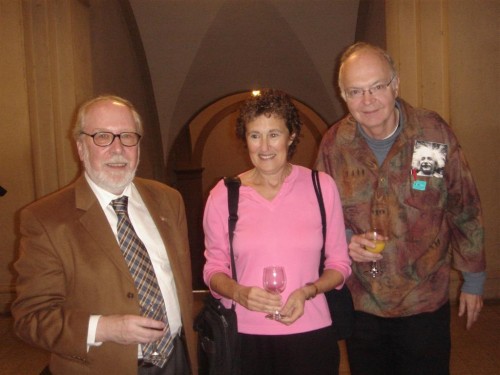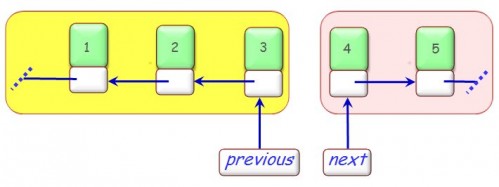Stendhal on abstraction
 This week we step away from our usual sources of quotations — the Hoares and Dijkstras and Knuths — in favor an author who might seem like an unlikely inspiration for a technology blog: Stendhal. A scientist may like anyone else be fascinated by Balzac, Flaubert, Tolstoy or Dostoevsky, but they live in an entirely different realm; Stendhal is the mathematician’s novelist. Not particularly through the themes of his works (as could be the case with Borges or Eco), but because of their clear structure and elegant style, impeccable in its conciseness and razor-like in its precision. Undoubtedly his writing was shaped by his initial education; he prepared for the entrance exam of the then very young École Polytechnique, although at the last moment he yielded instead to the call of the clarion.
This week we step away from our usual sources of quotations — the Hoares and Dijkstras and Knuths — in favor an author who might seem like an unlikely inspiration for a technology blog: Stendhal. A scientist may like anyone else be fascinated by Balzac, Flaubert, Tolstoy or Dostoevsky, but they live in an entirely different realm; Stendhal is the mathematician’s novelist. Not particularly through the themes of his works (as could be the case with Borges or Eco), but because of their clear structure and elegant style, impeccable in its conciseness and razor-like in its precision. Undoubtedly his writing was shaped by his initial education; he prepared for the entrance exam of the then very young École Polytechnique, although at the last moment he yielded instead to the call of the clarion.
The scientific way of thinking was not just an influence on his writing; he understood the principles of scientific reasoning and knew how to explain them. Witness the following text, which explains just about as well as anything I know the importance of abstraction. In software engineering (see for example [1]), abstraction is the key talent, a talent of a paradoxical nature: the basic ideas take a few minutes to explain, and a lifetime to master. In this effort, going back to the childhood memories of Henri Beyle (Stendhal’s real name) is not a bad start.
Stendhal’s Life of Henri Brulard is an autobiography, with only the thinnest of disguises into a novel (compare the hero’s name with the author’s). In telling the story of his morose childhood in Grenoble, the narrator grumbles about the incompetence of his first mathematics teacher, a Mr. Dupuy, who taught mathematics “as a set of recipes to make vinegar” (comme une suite de recettes pour faire du vinaigre) and tells how his father found a slightly better one, Mr. Chabert. Here is the rest of the story, already cited in [2]. The translation is mine; you can read the original below, as well as a German version. Instead of stacks and circles — or a university’s commencement day, see last week’s posting — the examples invoke eggs and cheese, but wouldn’t you agree that this paragraph is as good a definition of abstraction, directly applicable to software abstractions, and specifically to abstract data types and object abstractions (yes, it does discuss “objects”!), as any other?
So I went to see Mr. Chabert. Mr. Chabert was indeed less ignorant than Mr. Dupuy. Through him I discovered Euler and his problems on the number of eggs that a peasant woman brings to the market where a scoundrel steals a fifth of them, then she leaves behind the entire half of the remainder and so forth. This opened my mind, I glimpsed what it means to use the tool called algebra. I’ll be damned if anyone had ever explained it to me; endlessly Mr. Dupuy spun pompous sentences on the topic, but never did he say this one simple thing: it is a division of labor, and like every division of labor it creates wonders by allowing the mind to concentrate all its forces on just one side of objects, on just one of their qualities. What difference it would have made if Mr. Dupuy had told us: This cheese is soft or is it hard; it is white, it is blue; it is old, it is young; it is mine, it is yours; it is light or it is heavy. Of so many qualities, let us only consider the weight. Whatever that weight is, let us call it A. And now, no longer thinking of cheese, let us apply to A everything we know about quantities. Such a simple thing; and yet no one was explaining it to us in that far-away province [3]. Since that time, however, the influence of the École Polytechnique and Lagrange’s ideas may have trickled down to the provinces.
References
[1] Jeff Kramer: Is abstraction the key to computing?, in Communications of The ACM, vol. 50, 2007, pages 36-42.
[2] Bertrand Meyer and Claude Baudoin: Méthodes de Programmation, Eyrolles, 1978, third edition, 1982.
[3] No doubt readers from Grenoble, site of great universities and specifically one of the shrines of French computer science, will appreciate how Stendhal calls it “that backwater” (cette province reculée).
Original French text
J’allai donc chez M. Chabert. M. Chabert était dans le fait moins ignare que M. Dupuy. Je trouvai chez lui Euler et ses problèmes sur le nombre d’œufs qu’une paysanne apportait au marché lorsqu’un méchant lui en vole un cinquième, puis elle laisse toute la moitié du reste, etc., etc. Cela m’ouvrit l’esprit, j’entrevis ce que c’était que se servir de l’instrument nommé algèbre. Du diable si personne me l’avait jamais dit ; sans cesse M. Dupuy faisait des phrases emphatiques sur ce sujet, mais jamais ce mot simple : c’est une division du travail qui produit des prodiges comme toutes les divisions du travail et permet à l’esprit de réunir toutes ses forces sur un seul côté des objets, sur une seule de leurs qualités. Quelle différence pour nous si M. Dupuy nous eût dit : Ce fromage est mou ou il est dur ; il est blanc, il est bleu ; il est vieux, il est jeune ; il est à moi, il est à toi ; il est léger ou il est lourd. De tant de qualités ne considérons absolument que le poids. Quel que soit ce poids, appelons-le A. Maintenant, sans plus penser absolument au fromage, appliquons à A tout ce que nous savons des quantités. Cette chose si simple, personne ne nous la disait dans cette province reculée ; depuis cette époque, l’École polytechnique et les idées de Lagrange auront reflué vers la province.
German translation (by Benjamin Morandi)
Deshalb ging ich zu Herrn Chabert. In der Tat war Herr Chabert weniger ignorant als Herr Dupuy. Bei ihm fand ich Euler und seine Probleme über die Zahl von Eiern, die eine Bäuerin zum Markt brachte, als ein Schurke ihr ein Fünftel stahl, sie dann die Hälfte des Restes hinterliest u.s.w. Es hat mir die Augen geöffnet. Ich sah was es bedeutet, das Algebra genannte Werkzeug zu benutzen. Unaufhörlich machte Herr Dupuy emphatische Sätze über dieses Thema, aber niemals dieses einfache Wort: Es ist eine Arbeitsteilung, die wie alle Arbeitsteilungen Wunder herstellt und dem Geist ermöglicht seine Kraft ganz auf eine einzige Seite von Objekten zu konzentrieren, auf eine Einzige ihrer Qualitäten. Welch Unterschied für uns, wenn uns Herr Dupuy gesagt hätte: Dieser Käse ist weich oder er ist hart; er ist weiss, er ist blau; er ist alt, er ist jung; er gehört dir, er gehört mir; er ist leicht oder er ist schwer. Bei so vielen Qualitäten betrachten wir unbedingt nur das Gewicht. Was dieses Gewicht auch sei, nennen wir es A. Jetzt, ohne unbedingt weiterhin an Käse denken zu wollen, wenden wir auf A alles an, was wir über Mengen wissen. Diese einfach Sache sagte uns niemand in dieser zurückgezogenen Provinz; von dieser Epoche an werden die École Polytechnique und die Ideen von Lagrange in die Provinz zurückgeflossen sein.



 Informatics Europe
Informatics Europe LASER summer school
LASER summer school Propulsion Academy
Propulsion Academy